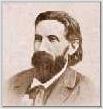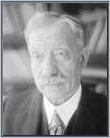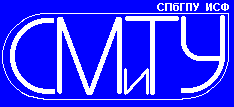Untill 1934 the department in modern conception didn't exist. There were chairs - professorial posts, instead of collectives of teachers and scientific employees as now. However the department "Structural Mechanics and Theory of Elasticity" has a rich prehistory tackled with the names of remarkable scientists and teachers, and this prehistory dates back to the very beginning of Politechnical Institute. When studies began, students of various faculties attended the lectures of the same professors. Therefore the majority of the departments existing nowdays at many faculties of the university associate their past with the names of the same scientists. Our department is not an exclusion. Many of the structural mechanics and statics of structures lecturers simultaneously taught same and other disciplines at several faculties.
At all engineering faculties of the institute, opened in 1902 (at that time there were only three technical faculties: shipbuilding, metallurgical and electromechanical), structural mechanics and statics of structures courses (later both disciplines were joined under the title "structural mechanics") were a part of engineers' professional training. As students started studing these disciplines in the 3-rd term, the first lectures in them took place in autumn 1903.
 In December 1902 Victor Lvovich Kirpichov(1845-1913) - the famous scientist in the field of theoretical and applied mechanics - was invited to the Polytechnical Institute. He had a serious teaching experience in Mikhailovskaya Artillery Academy in St.Petersburg, Kharkov Technological Institute and Kiev Polytechnical Institute. In St.Petersburg Polytechnical Institute he became the chairman of the Construction Commission. Such responsible work was guaranteed to V.L.Kirpichov as he was the organizer and the director of institutes in Kharkov and Kiev. In 1904 professor Kirpichov began reading the course of an applied and structural mechanics for the students of all engineering faculties. In 1907 he published his "Conversation about mechanics ", later multiply reissued.
In December 1902 Victor Lvovich Kirpichov(1845-1913) - the famous scientist in the field of theoretical and applied mechanics - was invited to the Polytechnical Institute. He had a serious teaching experience in Mikhailovskaya Artillery Academy in St.Petersburg, Kharkov Technological Institute and Kiev Polytechnical Institute. In St.Petersburg Polytechnical Institute he became the chairman of the Construction Commission. Such responsible work was guaranteed to V.L.Kirpichov as he was the organizer and the director of institutes in Kharkov and Kiev. In 1904 professor Kirpichov began reading the course of an applied and structural mechanics for the students of all engineering faculties. In 1907 he published his "Conversation about mechanics ", later multiply reissued.
The course of statics of structures was read by professor Sergey Ivanovich Druzhinin (1872-1935), more known as a specialist in materials' strength. S.I.Druzhinin was the author of the "Strength of materials", the book which was reissued ten times during his life. In 1903-1906 he was engaged with organizing of the mechanical laboratory, which he managed untill 1931.
At the shipbuilding faculty apart from common for all engineering faculties structural mechanics and statics of structures a new discipline and science - structural mechanics of a ship - was taught. Its founder was Ivan Grigoryevich Bubunov (1872-1919) - remarkable ship engineer and scientist, designer of the first domestic submarines, teacher since 1904 and professor since 1909. In 1909-1911 he published a fundamental transaction "Structural mechanics of a ship ". Prof. Bubnov also read the course of theory of elasticity to students-shipbuilders.
The first teachers - at practical exercises and designing in the courses of structural mechanics and statics of structures were:
Alexander Konstantinovich Zaytsev (1893-1951), more known as an expert in friction and lubrication problems (for works in this areas he received a doctoral degree without a thesis in 1937). Besides A.K.Zaytsev was the first and the only (untill 1907) teacher of geodezy at all engineering faculties;
Konstantin Mikhaylovich Doubyaga (1877 -?) - graduated from railway institute and came to the Polytechnical Institute following his teacher S.I.Druzhinin. He taught students statics of structures, but mostly - strength of materials and theoretical mechanics;
Nikolay Alexeyevich Rynin (1877-1942), had been invited to the Polytechnical Institute before he graduated from the Railway institute in 1902. At the same moment he was sent on a mission to Germany to prof. Muller-Breslau to prepare for pedagogical work in structural mechanics. N.A. Rynin also taught students descriptive geometry (he was almost the only teacher of this subject in all the institute), dynamics of machines and a course of metal constructions. A special popularity N.A.Rynin received for his encyclopaedic transactions on a history and a theory of jet driving and space flights to the Moon ("The Interplanetary Travelling", 1928-1932). His name is given to a crater the Moon reverse side. In Politechnical Institute N.A.Rynin worked untill 1931.
Stephen Prokofyevich Timoshenko (1878-1972) - N.A.Rynin's coursemate in the Railway Institute, invited to Polytechnical Institute to get a post of an applied mechanics assistant. In 1903-1904 he was the teacher of statics of structures.
In 1906 S.P.Timoshenko left Petersburg for Kiev to get a professorial chair there. Stanislav Ignatyevich Belzetskiy (1856 -?) - an experienced designer and builder of railways, bridges and other structers, author of a series of works in the field of structural mechanics and theory of elasticity took Timoshenko's place. S.I.Belzetskiy has made an important contribution to the theory of arches and calottes development.
In autumn 1907 three new engineering faculties started teaching students: civil engineering, mechanical and chemical. In 1909 two of them (except chemical) were established officially. Initiative group for civil engineering faculty establishing included the dean of the electromechanical faculty M.A.Shatelen and three teachers of structural mechanics and statics of structures: S.I.Druzhinin, V.L.Kirpichov and S.I.Belzetskiy. In 1909 two chairs of structural mechanics (two professorial posts) were established at once. One chair was taken by S.I.Belzetskiy, another one remained vacant for over than ten years and was abolished.
By autumn 1909, when students of the first reception of new faculties have reached a 5-th term, the teaching load on a statics of structures lecturers has seriously increased. Prof. Belzetskiy started reading lectures in this didcipline. Professor Druzhinin had to bear enlarged teaching load in the material's strength -he was the only lecturer in this discipline for students of all five engineering faculties, and in addition - the dean of civil engineering faculty (untill 1915) and manager of mechanical laboratory (administrative posts before the revolution were paid singly and did not free professors from their basic work of reading lectures). Prof. Kirpichov managed to read courses of lectures on applied and structural mechanics. New teachers were invited for teaching students at the exercises in structural mechanics and statics of structures:
Leonid Vasilyevich Assour(1878-1920), graduated from Moscow University and Higher engineering school. In Polytechnical institute taught students technical plotting alongside with applied and stuctural mechanics, theoretical mechanics, theory of mechanisms and machines, special course of machines regulating. L.V.Assour's life was short, but he did much - he created a rational classification of flat hinged mechanisms and developed a technique of formation of flat mechanisms of any rigidity by a method of series stratification of kinematic circuits of "Assur groups";
Joseph Josephovich Bentkovskiy (1878-1931), also finished two higher schools - University and Railway Institute in St. Petersburg. He taught students statics of structures, and also mathematics, materials' strength and theoretical mechanics. In 20-th years he concentrated in structural mechanics and materials' strength, being the professor in several institutes;
 Boris Grigoryevich Galerkin(1871-1945) - in future the first head of the department and academician. In 1909 - a teacher-beginner, a promissing engineer and theorist. He was recruited to Polytechnical Institute in two months after his withdrawal from prison, where had spent 1,5 years for political activities. In that 1909 his first scientific work, written in prison, with a long title: "The Theory of Longitudinal Curving and the Experience of Application of the Theory of Longitudinal Curving to Multi-Storey Racks, Racks with Rigid Junctions and Systems of Racks" was published. Before the revolution his teaching activity did not go beyond the borders of mechanical faulty.
Boris Grigoryevich Galerkin(1871-1945) - in future the first head of the department and academician. In 1909 - a teacher-beginner, a promissing engineer and theorist. He was recruited to Polytechnical Institute in two months after his withdrawal from prison, where had spent 1,5 years for political activities. In that 1909 his first scientific work, written in prison, with a long title: "The Theory of Longitudinal Curving and the Experience of Application of the Theory of Longitudinal Curving to Multi-Storey Racks, Racks with Rigid Junctions and Systems of Racks" was published. Before the revolution his teaching activity did not go beyond the borders of mechanical faulty.
The names of outstanding mechanical scientists - I.G.Bubnov and B.G.Galerkin have benn joined in a title of widely spread in mathematics and mechanics "Bubnov-Galerkin method" being used for an approximate solution of variational problems without minimization of an energy functional, but using transformed differential equations (I.G.Bubnov has published the idea of this method for a particular case in 1913, and B.G.Galerkin - for common case in 1915).
Alexander Mefodyevich Redko (1862 -?), graduated from St. Petersburg Technological and Railway Institutes. Between time of studuing in these two institutes he had worked for ten years on construction of railways and made his first publications in structural mechanics. In Polytechnical Institute A.M.Redko didn't work long - since 1908 till 1912. He taught students of civil engineering faculty statics of structures and architecture.
In 1913 prof Kirpichov died, and the course of structural mechanics was separated from the applied mechanics course and prof.Druzhinin started reading it. At that moment S.P.Timoshenko, who had returned from Kiev to St.Petersburg in 1911 and had already taken two material's strength professorial chairs in St. Petersburg - in Electrotechnical and Railway institutes, came to work to Polytechnical Institute. Here he had to content with a post of a teacher of structural mechanics and theory of elasticity at first. After I.G.Bubnov left the institute students - shipbuilders listened prof.Belzetskiy's lectures on the theory of elasticity together with the students - civil engineers. Since 1915 S.P.Timoshenko, who had become a professor, read lectures to the students of the shipbuilding department. During the work in Polytechnical institute before emigration S.P.Timoshenko has created the classical "Course of Strength of Materials" (1911) and "Course of the Theory of Elasticity" (1914-1916).
Since 1911 before the revolution two railway engineers who had a solid experience of bridges construction in St. Petersburg, Pskov and other citie were the steachers of statics of structures:
Ottomar Alexandrovich Madisson (1879 -?) later emigrated to Estonia, where became the professor of Tallinn polytechnical institute, and in 1946 - academician;
Stanislav Romualdovich Miller (1880 -?), combining his teaching activity with a service in the East-Chinese Railway Company.
In 1913 Alexander Mikhailovich Borodulin (1886 -?) was invited to take the place of A.M.Redko. He graduated from Technological institute, where under the guiding of S.I.Belzetskiy he had projected immovable pipes and calottes, foundations and piers of bridges, bridges and trusses.
To make the list of the department's teachers of the prerevolutionary period full, the names of two more officers, who worked mostly at the shipbuilding department should be mentioned:
Anatoliy Iosafovich Maslov (1884-1968), graduated from Marine Academy in 1913 and then was invited to the Polytechnical Institute on prof.Bubnov's recommendation. He was already experienced ship builder from the Baltic Shipyard and in future he became the head-designer of the famous "Kirov" cruiser and other large ships. In the institute he conducted excersises on structural mechanics of a ship and theory of elasticity, managing simultaneously the engineering bureau at the Admiralty Shipyard;
Yakov Matveyevich Khlytchiyev (1886 -1963) - a graduate of the shipbuilding faculty of 1911 who was left in the institute for teaching structural mechanics of a ship and theory of elasticity. He combined lectures with the work on the Baltic Shipyard. In 1918 he left Petrograd for Kiev, and then, as well as S.P.Timoshenko went to Yugoslavia, where has become academician.
A small group of teachers handled teaching of structural mechanics and statics of structures at all five engineering faculties and theory of elasticity at the shipbuilding and civil engineering faculties. Meanwhile the number of students in the institute had increased to 6 thousands by 1914/1915 academic year. An applied and structural mechanics were taught uniformly at all faculties: at the 3-d and 4-th terms for 3 hours of lectures and 2 hours of exercises weekly. The statics of structures was taught at different faculties in different ways: on electromechanical - at the 4-th and the 5-th terms for 2 hours of exercises per one week; on metallurgical - in the 5-th term for 2 hours of exercises and in the 8-th term - 4 hours of lectures; on shipbuilding - in the 5-th term for 2 hours of lectures and exercises; on mechanical - in the 4-th term for 2 hours of lectures and exercises and in the 5-th term for 3 hours of exercises; on civil-engineering - in the 5-th term - 4 hours of lectures, in the 6-th term - 4 hours of lectures and 2 hours of exercises, in the 7-th term - for 2 hours of exercises weekly.
Besides civil students studied theory of elasticity - for 2 hours of lectures in the 6-th and the 7-th terms. Students - shipbuilders listened the structural mechanics of a ship and theory of elasticity courses within the frames of one course, beginning at the 7-th and finishing at the 10-th term (at this faculty the theoretical course lasted not for 7 but for 9 terms). It is important to note, that the training in the sphere of structural mechanics and statics of structures at the civil engineering faculty was the same at its hydraulic engineering and road making sections (including irrigation specialization). At first theory of elasticity was mandatory for both sections, but beginning with the times of the World War I it has become optional for hydraulic engineering students. As for the common number of educational hours given to these disciplines at the civil-engineering faculty, it was 1,5 - 2,5 times large, than now, 80-90 years later, at different specialities of the civil-engineering faculty.



 |
Saint-Petersburg State Polytechnical University |
| STRUCTURAL MECHANICS AND THEORY OF ELASTICITY DEPARTMENT |
 |


![]()
![]()
![]()
 In December 1902 Victor Lvovich Kirpichov(1845-1913) - the famous scientist in the field of theoretical and applied mechanics - was invited to the Polytechnical Institute. He had a serious teaching experience in Mikhailovskaya Artillery Academy in St.Petersburg, Kharkov Technological Institute and Kiev Polytechnical Institute. In St.Petersburg Polytechnical Institute he became the chairman of the Construction Commission. Such responsible work was guaranteed to V.L.Kirpichov as he was the organizer and the director of institutes in Kharkov and Kiev. In 1904 professor Kirpichov began reading the course of an applied and structural mechanics for the students of all engineering faculties. In 1907 he published his "Conversation about mechanics ", later multiply reissued.
In December 1902 Victor Lvovich Kirpichov(1845-1913) - the famous scientist in the field of theoretical and applied mechanics - was invited to the Polytechnical Institute. He had a serious teaching experience in Mikhailovskaya Artillery Academy in St.Petersburg, Kharkov Technological Institute and Kiev Polytechnical Institute. In St.Petersburg Polytechnical Institute he became the chairman of the Construction Commission. Such responsible work was guaranteed to V.L.Kirpichov as he was the organizer and the director of institutes in Kharkov and Kiev. In 1904 professor Kirpichov began reading the course of an applied and structural mechanics for the students of all engineering faculties. In 1907 he published his "Conversation about mechanics ", later multiply reissued.
 Boris Grigoryevich Galerkin(1871-1945) - in future the first head of the department and academician. In 1909 - a teacher-beginner, a promissing engineer and theorist. He was recruited to Polytechnical Institute in two months after his withdrawal from prison, where had spent 1,5 years for political activities. In that 1909 his first scientific work, written in prison, with a long title: "The Theory of Longitudinal Curving and the Experience of Application of the Theory of Longitudinal Curving to Multi-Storey Racks, Racks with Rigid Junctions and Systems of Racks" was published. Before the revolution his teaching activity did not go beyond the borders of mechanical faulty.
Boris Grigoryevich Galerkin(1871-1945) - in future the first head of the department and academician. In 1909 - a teacher-beginner, a promissing engineer and theorist. He was recruited to Polytechnical Institute in two months after his withdrawal from prison, where had spent 1,5 years for political activities. In that 1909 his first scientific work, written in prison, with a long title: "The Theory of Longitudinal Curving and the Experience of Application of the Theory of Longitudinal Curving to Multi-Storey Racks, Racks with Rigid Junctions and Systems of Racks" was published. Before the revolution his teaching activity did not go beyond the borders of mechanical faulty.

![]()